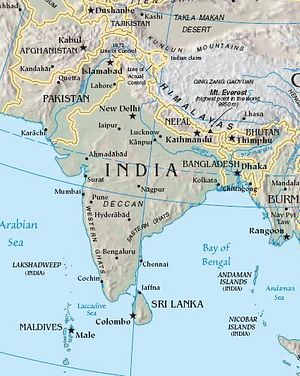According to the newly released Fragile States Index (FSI) by the Fund for Peace, Asia’s most fragile states are heavily concentrated in South Asia. According to the index, Afghanistan is the most unstable Asian state, ranked seventh overall in the world, followed by Pakistan at 10 (the higher the ranking, the less stable the country is considered). Both countries are incidentally ranked higher than Iraq and Syria, both of whom are currently massively unstable internally. Myanmar and North Korea are the two highest non-South Asian states in the index, appearing at 24 and 26 respectively. Bangladesh, Sri Lanka, and Nepal appear at 29, 30, and 31 respectively, highlighting South Asia as the region most dense with relatively fragile states outside of the Middle East and North-Central Africa (see the complete rankings here).
Asian giants India and China did relatively better. India ranked at 79, making it moderately stable, and China ranked at 66. India’s rank particularly stood out in its region, where almost every other state was ranked in the top 30, painting a troubling picture of governance and state strength across South Asia. Asia’s least fragile states list was perhaps less surprising, including the likes of Singapore (158), South Korea (157), and Japan (156). Notably, Iran — owing to its success in nuclear negotiations with the P5+1 last fall, in part — is the most improved country on the index.
The ranking’s methodology is based on a holistic analysis of the countries involved. The ranking is “based on The Fund for Peace’s proprietary Conflict Assessment System Tool (CAST) analytical platform.” The rankings are determined by the 12 primary social, economic and political indicators that reflect the stability and security of a state most comprehensively. Each of these 12 indicators is further splint into 14 other indicators. The FSI examines demographic pressures, refugees and internally displaced persons (IDPs), group grievances, human flight and brain drain, uneven economic development, poverty and economic decline, state legitimacy, public services, human rights and rule of law, security apparatus, factionalized elites, and external intervention as its 12 primary indicators.
The indicators help to explain some surprising results like North Korea’s (which is less fragile than Afghanistan and Pakistan according to the FSI). North Korea scores relatively well on the refugees and IDPs, group grievance, and human flight and brain drain indicators, bringing down its aggregate score.

































